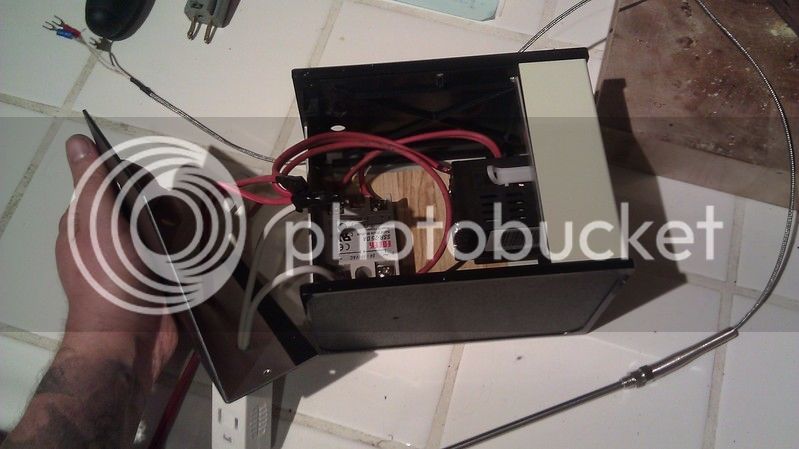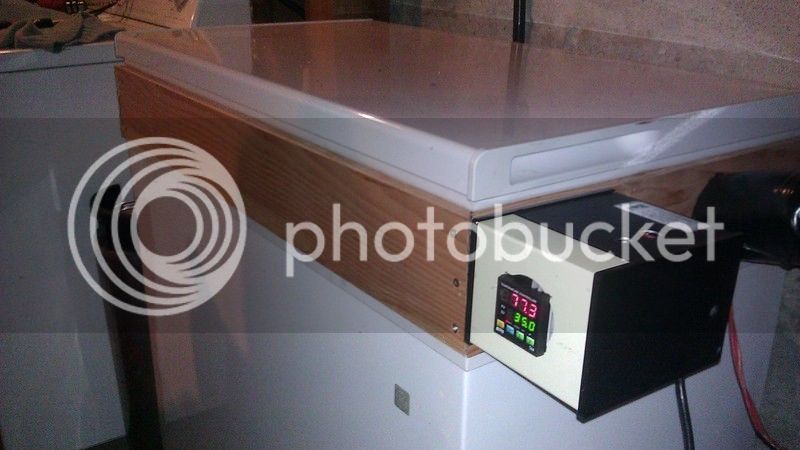Hey guys,
This is my first post, so feel free to flame me or yell at me to use the search function if the answer to my question is out there somewhere...
I'm handing off my old $25 goodwill-scored kegerator to my brother, and installing a whole new system. I got a GE 7.0 cf at Best Buy (thanks to the help of the "sizing up your chest freezer" thread!) for $99. It was a return. Great deal! Anyway, I bought 4 new shanks and faucets and am installing them on the wall beside my kitchen. The keezer is immediately beneath them in the basement. The rise is about 10', and the lines will be about 12' from the keezer to the shanks. There will be an additional 3' per line inside the keezer.
I decided to go witha liquid-cooled system, and will at first attempt keezer temp water (saline? iodophor solution? Does it matter?), but I need help sourcing a pump. I've followed links to beer pumps, and I've looked at sump and pond pumps, but I want to find the most cheapest, most efficient option before I buy. With a submersible, head height is an issue. Has anyone ever tried a pressurized system, like is used with radiant heating? I was thinking one could use a small water tank (or anything that a person could plumb fittings to), pressurize the system to 60# or so with tap water, and use an inline circulator (something like this, or a cheaper taco circulator: http://www.houseneeds.com/shop/laing/laingpumpdcsolarvariostrongmain.asp).
My trunk line is 3/8" hose, with the last 3' being 3/16", and two poly lines all bundled together, and eventually wrapped in pipe wrap and insulation. I'm planning to use more 3/8" beer line (because it flexes without kinking) for the coolant in my faucet box. The beer line will connect to the cool incoming poly, wrap the shanks in my faucet box, and then connect to the returning poly line.
So far, all I have is the lines bundled and run through the floor, and an old electrical panel box installed for my faucet junction box. Any advice will be appreciated here... I'd rather get this right the first time than have to do it twice! Also, with this distance will I have to run a nitro/CO2 mix to push the beer and not over carbonate?
Thanks!





This is my first post, so feel free to flame me or yell at me to use the search function if the answer to my question is out there somewhere...
I'm handing off my old $25 goodwill-scored kegerator to my brother, and installing a whole new system. I got a GE 7.0 cf at Best Buy (thanks to the help of the "sizing up your chest freezer" thread!) for $99. It was a return. Great deal! Anyway, I bought 4 new shanks and faucets and am installing them on the wall beside my kitchen. The keezer is immediately beneath them in the basement. The rise is about 10', and the lines will be about 12' from the keezer to the shanks. There will be an additional 3' per line inside the keezer.
I decided to go witha liquid-cooled system, and will at first attempt keezer temp water (saline? iodophor solution? Does it matter?), but I need help sourcing a pump. I've followed links to beer pumps, and I've looked at sump and pond pumps, but I want to find the most cheapest, most efficient option before I buy. With a submersible, head height is an issue. Has anyone ever tried a pressurized system, like is used with radiant heating? I was thinking one could use a small water tank (or anything that a person could plumb fittings to), pressurize the system to 60# or so with tap water, and use an inline circulator (something like this, or a cheaper taco circulator: http://www.houseneeds.com/shop/laing/laingpumpdcsolarvariostrongmain.asp).
My trunk line is 3/8" hose, with the last 3' being 3/16", and two poly lines all bundled together, and eventually wrapped in pipe wrap and insulation. I'm planning to use more 3/8" beer line (because it flexes without kinking) for the coolant in my faucet box. The beer line will connect to the cool incoming poly, wrap the shanks in my faucet box, and then connect to the returning poly line.
So far, all I have is the lines bundled and run through the floor, and an old electrical panel box installed for my faucet junction box. Any advice will be appreciated here... I'd rather get this right the first time than have to do it twice! Also, with this distance will I have to run a nitro/CO2 mix to push the beer and not over carbonate?
Thanks!









